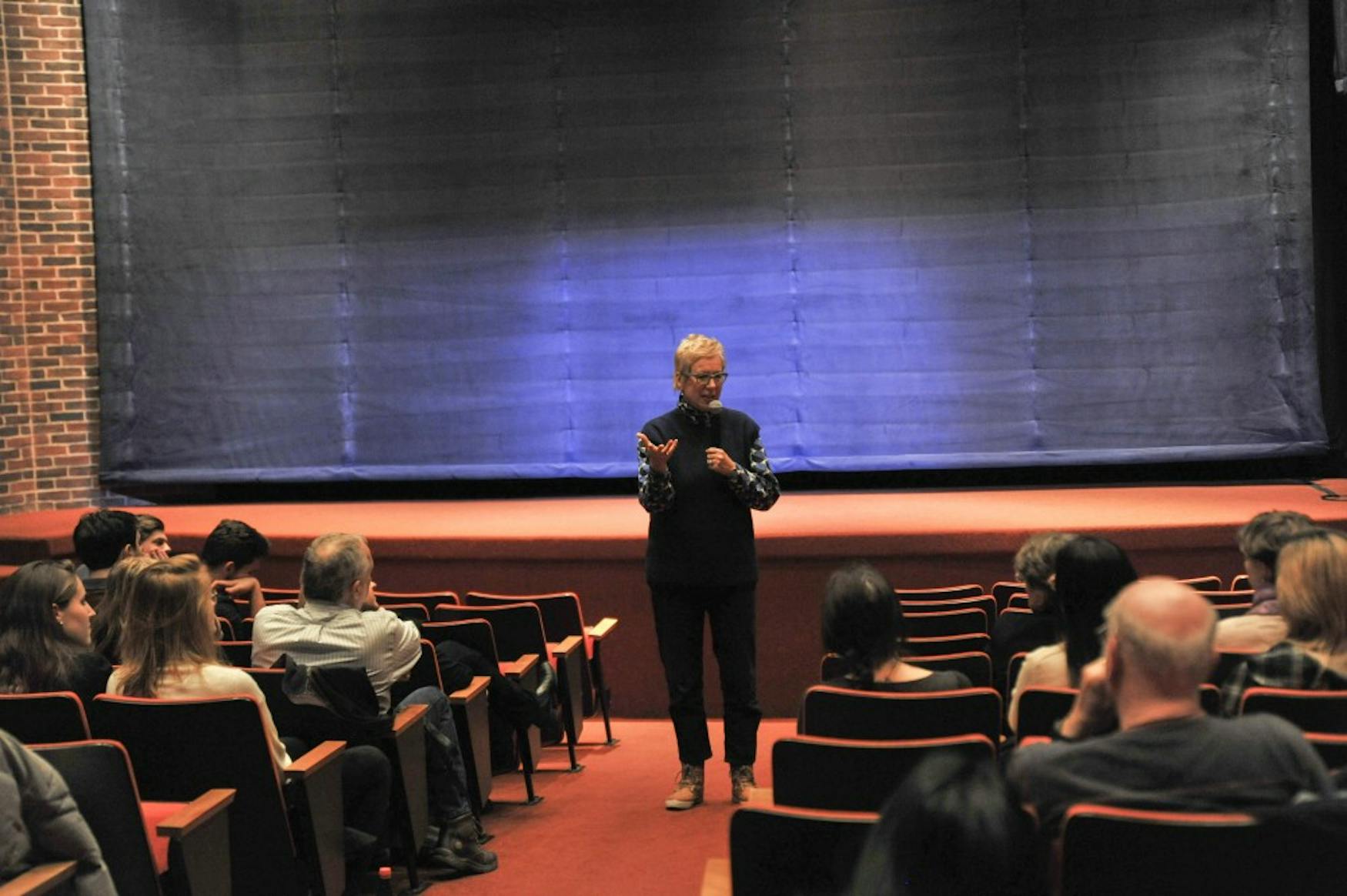‘Fukushima Mon Amour’ the merrier
The Center for German and European Studies hosted a film night at the Wasserman Cinematheque on Feb. 28. The department screened “Fukushima Mon Amour,” a film following a 20-something German woman travelling to the site of the 2011 nuclear meltdown caused by a magnitude 9.0 earthquake. She goes to an adjacent temporary residence to entertain the remaining citizens who insisted on staying in their hometown. When she is tricked into bringing an old geisha back to her destroyed home a few kilometers away, the two rebuild the house in an attempt to escape their past mistakes.
The director, Doris Doerrie, was in attendance to briefly summarize the film before the screening and to conduct a Q&A afterward. As someone who has visited Japan frequently throughout her life, she felt obligated to tell the stories of Fukushima survivors through the film. After spending six months among the wreckage and welfare-dependent families, she wrote this story about loss, legacy and pain. She also drew upon childhood memories from growing up in post-World War II Germany, where she lived in similar conditions in devastated lands.
As I left the theater, a thought passed through my mind: “This was the most ‘Indie’ film I’ve ever watched.” It was a black and white film with a French title featuring German, English and Japanese dialogue shot in a real disaster zone by a German filmmaker; there was even a cat motif. All of these artistic choices had significance to Doerrie and her story. The French title was an homage to the 1959 classic “Hiroshima Mon Amour”; the language barrier mirrored the director’s difficulties with communication during her first trips to Japan; the black and white was used to salute Japanese cinema and mask the bland, dead environment left behind from the disaster.
The crew endured harsh conditions, shooting a mere 12 kilometers from the actual power plant amid lingering radiation at the devastated house of a family of survivors. They were no strangers to the sound of a Geiger counter. All this to tell the stories of these people, who are haunted by survivor’s guilt and whose trauma obscures those crucial 20 minutes when they lost everything they had.
There is a palpable intimacy between the characters that can be accredited to the real elements of the disaster. Supporting characters were played by actual survivors, such as the town’s senior citizens and the abbot living in the temporary residence with them. The old geisha’s story was based off that of a real geisha who survived the disaster. In the film, she is concerned that as the last of her geisha friends leave, their beloved song will die with her and the legacy will be lost. The film even features the actual song of the real geisha.
Doerrie wished to tell the story of a master-student relationship between the old geisha and the young German woman in an environment that would break the two down. Despite some of the plot beats being derivative (à la “The Odd Couple” and master-student tropes), the bond between the two is unique in that both the master and the student are female. Doerrie mentioned that this was very rarely portrayed on film, so she decided to keep this dynamic. The two actresses playing the student and master, Rosalie Thomass and Kaori Momoi, respectively, performed very well for most of the film. However, there were some not-so-believable moments alongside editing choices that were jarring and redundant.
“Fukushima Mon Amour” is an experience. It’s drowning in symbolism but is kept afloat by a thoughtful and evocative story. I plead that you all go to the Wasserman Cinematheque whenever there is a screening. It’s such a great and convenient venue.




Please note All comments are eligible for publication in The Justice.